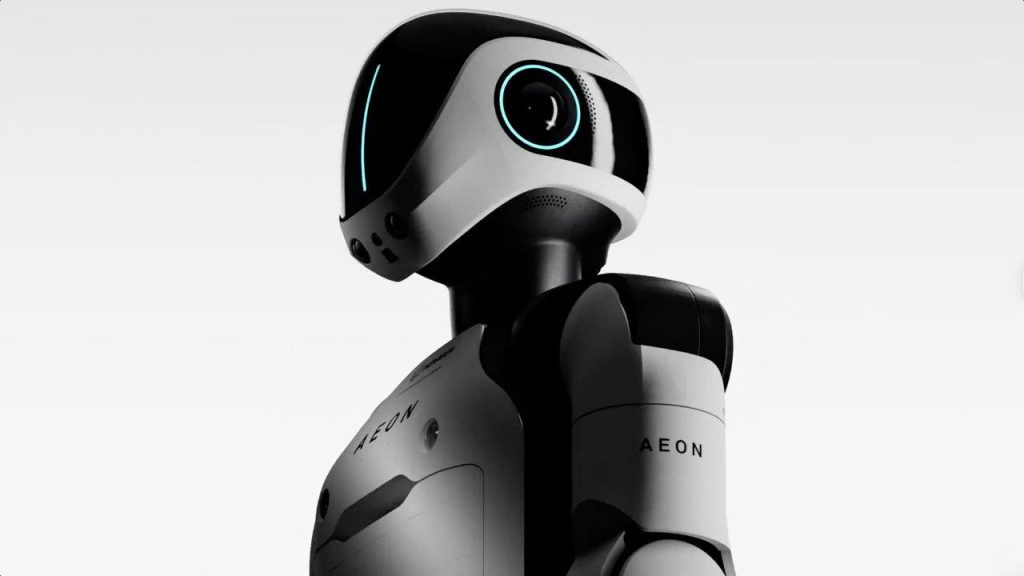In response to labor shortages and increasing demands for efficiency, industries are increasingly turning to robotics as a viable solution. Hexagon’s new humanoid robot, AEON, is designed to fill workforce gaps and enhance productivity on factory floors. With its advanced capabilities in automation and AI, AEON promises to redefine manufacturing processes and improve workplace safety, making it a significant innovation in the realm of industrial technology.
| Article Subheadings |
|---|
| 1) The technology behind this AI factory robot: Partnerships and innovation |
| 2) Key features of AEON factory robots: Agility, awareness, and versatility |
| 3) Self-learning and digital twin technology |
| 4) Continuous operation: Robot’s unique battery swapping |
| 5) Real-world deployment: Factory robot in action with industry leaders |
The technology behind this AI factory robot: Partnerships and innovation
AEON operates at the intersection of cutting-edge technology, bringing together a powerful stack that enhances its operational capabilities. At the core, the robot utilizes NVIDIA’s robotics platform, which enables real-time decision-making and ensures that AEON can evolve continuously in its tasks. Microsoft Azure plays a critical role in facilitating cloud infrastructure, allowing for efficient data management and training of AEON’s AI algorithms. This partnership ensures a robust foundation for advanced robotics that can adapt to various industrial challenges.
Further enhancing its capabilities, Maxon’s advanced actuators allow AEON to perform human-like movements with unparalleled agility. This combination of technologies not only facilitates the precision required for industrial tasks but also positions AEON as a serious player in the highly competitive field of industrial automation.
Key features of AEON factory robots: Agility, awareness, and versatility
Among AEON’s most notable features is its agility and dexterity, essential for navigating dynamic environments typically found in factories and warehouses. With Hexagon’s expertise in precision measurement, AEON is capable of executing tasks that demand both speed and accuracy, such as picking components from conveyor belts and conducting in-depth inspections of various industrial products.
Moreover, AEON is equipped with advanced spatial awareness technologies, utilizing a combination of sophisticated sensors and AI-driven mission control. This allows it to adapt seamlessly to changing environments by avoiding obstacles and interpreting the spatial layout effectively, thereby elevating the safety and efficiency of operations.
Versatility is also a cornerstone of AEON’s design. It can engage in a diverse array of tasks, ranging from machine tending to asset inspection, making it a flexible tool in any industrial setting. Additionally, AEON’s modular architecture allows for the incorporation of new capabilities over time, ensuring it remains relevant as industry needs evolve.
Self-learning and digital twin technology
AEON goes beyond static programming with a self-learning capability that enhances its intelligence over time. This unique feature allows the robot to gather intricate scans of real-world environments as it works, which contribute to the creation of digital twins in NVIDIA Omniverse. These digital representations of actual settings not only optimize AEON’s learning process but also become invaluable assets for training subsequent generations of the robot.
Through its self-learning loop, AEON harnesses experiences gathered from a wide array of tasks, further enhancing its performance. As a result, each iteration of the robot becomes smarter, more efficient, and better equipped to handle the complexities of industrial environments.
Continuous operation: Robot’s unique battery swapping
One of AEON’s standout features is its smart battery-swapping mechanism, designed to ensure continuous operation without downtime. In environments where production speed is crucial, the ability to replace batteries swiftly means AEON can maintain its operational status around the clock. This feature is particularly significant for industries where the cost of downtime can be substantial, ensuring that AEON remains a reliable asset for manufacturers.
Real-world deployment: Factory robot in action with industry leaders
Hexagon is partnering with notable industry leaders such as Schaeffler and Pilatus to deploy AEON in live production settings. These pilot programs focus on having AEON undertake essential tasks such as machine tending, part inspection, and reality capture, demonstrating its ability to adapt to real-world challenges.
Initial results from these deployments indicate AEON’s effectiveness in enhancing productivity, efficiently complementing human workers, and addressing labor shortages. These collaborations not only validate AEON’s capabilities but also pave the way for broader acceptance of robotics in industrial operations.
| No. | Key Points |
|---|---|
| 1 | AEON is designed to fill workforce gaps in industries facing labor shortages. |
| 2 | The robot utilizes advanced technologies and partnerships, including NVIDIA and Microsoft Azure. |
| 3 | AEON features agility and spatial awareness, allowing it to operate effectively in dynamic environments. |
| 4 | Its self-learning technology enhances its performance through continuous experience accumulation. |
| 5 | AEON’s battery-swapping mechanism allows for continuous work without downtime, crucial for production environments. |
Summary
Hexagon’s AEON humanoid robot marks a significant advancement in the application of robotics within industrial settings. By addressing labor shortages and enhancing efficiency, AEON serves as a pioneering model in rethinking the future of work. As industries continue to embrace such technological innovations, the implications for productivity, safety, and the redefinition of workplace roles will shape the trajectory of manufacturing and beyond.
Frequently Asked Questions
Question: What specific tasks can AEON undertake in an industrial setting?
AEON is capable of performing tasks such as machine tending, part inspection, and reality capture in various production environments.
Question: How does AEON learn and improve its capabilities over time?
The robot uses a self-learning loop, collecting data from its experiences to build digital twins and enhance its performance with each task it completes.
Question: Why is continuous operation important for factory robots like AEON?
Continuous operation minimizes downtime in production processes, which is crucial for maintaining high productivity and reducing operational costs in industrial environments.


